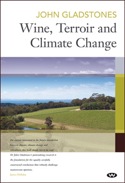 This a guest post by Stephan Lewandowsky, the Winthrop Professor and Australian Professorial Fellow at the School of Psychology at the University of Western Australia. The article originally appeared at Shaping Tomorrow’s World.
This a guest post by Stephan Lewandowsky, the Winthrop Professor and Australian Professorial Fellow at the School of Psychology at the University of Western Australia. The article originally appeared at Shaping Tomorrow’s World.
The Australian Future fund is tasked with delivering high risk-adjusted returns on public funds, such as the Australian Government’s budget surpluses, in order to cover the Government’s unfunded superannuation liability arising from entitlements to public servants and defence personnel.
The chairman of the Future Fund, David Murray, recently suggested on national TV with respect to climate change that “if we’re not certain that the problem’s there, then we don’t – we shouldn’t take actions which have a high severity the other way.”
This attitude towards uncertainty is not atypical: numerous news commentators have cited uncertainty about the severity of climate change in support of their stance against taking any mitigative action.
In a nutshell, the logic of this position can be condensed to “there is so much uncertainty that I am certain there isn’t a problem.” How logical is this position? Can we conclude from the existence of uncertainty that there certainly is no problem?
This conclusion appears inadvisable for a number of reasons that will be examined in this series of three posts. To foreshadow briefly, there are three reasons why uncertainty should not be taken as a reason for inaction on climate change:
- Uncertainty should make us worry more than certainty, because uncertainty means that things can be worse than our best guess. Today’s post expands on this point below, by showing that in the case of climate change, uncertainty is asymmetrical and things are more likely to be worse, rather than better, than expected.
- In the second post, I will show that it is a nearly inescapable mathematical constraint that greater uncertainty about the future evolution of the climate necessarily translates into greater expected damage cost.
- Finally, the presence of uncertainty does not negate the urgency of mitigative action. There may be uncertainty about our carbon budget — that is, the amount of greenhouse gasses we can emit before we are likely to exceed temperature increases that are deemed “safe” — but the implications of there being a budget are that delaying mitigative action will necessarily end up being more costly later.

 Climate change is happening now and Australia is in the firing line says Jim Salinger in this guest post. This article first appeared in the
Climate change is happening now and Australia is in the firing line says Jim Salinger in this guest post. This article first appeared in the  Regular listeners to The Climate Show will know that I often witter on about what I’ve been up to in my little vineyard. At
Regular listeners to The Climate Show will know that I often witter on about what I’ve been up to in my little vineyard. At 